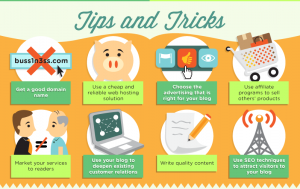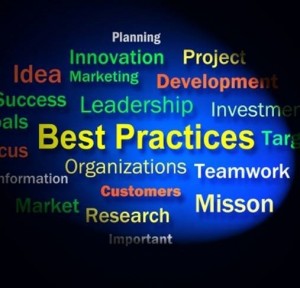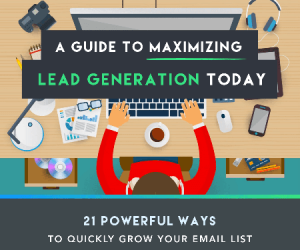— September 11, 2017
Within the first 6 months of starting my first job in the startup space, I had the opportunity to be part of a team pitching at startup battlefield at TechCrunch, New York. Being very young and inexperienced at a time, I had no idea what to expect, how to get the most out of the event and how to make sure I really enjoy everything on the way.
With so many startup conferences coming up this year, I thought my lessons learnt could help you also! Read on find out how to prep for your next startup conference to get the most out of it.
Before the event
Define ONE Goal
This is your starting point. Before committing to the event, you must set up a strategy and your goals. Ask yourself, what do you want to achieve from the conference? The main reasons why companies decide to have a stand usually are:
- Acquire new clients
- Make new investor relations
- Recruit new staff
- Product branding and awareness
Try to choose only ONE goal to focus on and plan your master-plan strategy around it. Why just one? Well, if you decide to equally distribute time for every goal, you’ll end up being all over the place without any set plan, no results and zero success. Choosing one main reason to attend the event will help manage your time much better and focus on building the right strategy for it.
Set up a Strategy
OK, so you have set yourself a goal – what’s next? It’s time to sit down and develop the strategy of how you are going to achieve it. Having a checklist is the best way to make sure you have everything planned and not drifting away from your schedule. For example, if your goal is to attract new clients, make sure to prepare handouts, business cards and invest in creating a visually attractive booth.
One secret that every startup should know is – real relationship building happens at the event and not the exhibition floor. Instead of waiting for the clients to approach you, go and get them yourself – attend the speakers’ panel, interact with everyone, be knowledgeable and invite professionals to check out your booth when the exhibition starts.
Mark Cuban at TechCrunch Conference in 2016 said – “There’s no sport as competitive as business”. This is the analogy that every startup company should go by. You have to prepare a plan of action and think strategically to get results.
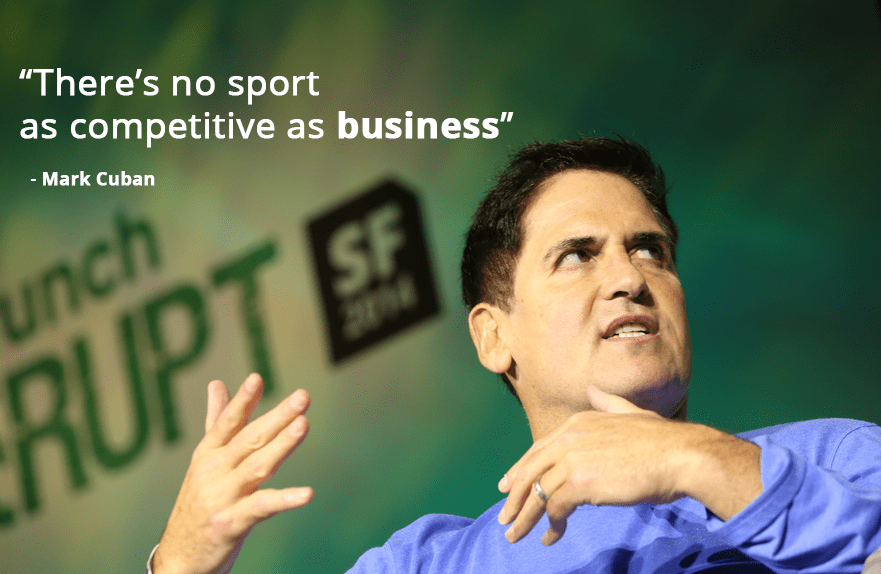
Plan your Pre-event Outreach
As most startups, I assume you’ve already established a small but solid client base and have a website with little traction. It never hurts to reach out to your existing customers and business partners to let them know you are attending TechCrunch.
Pre-show marketing is serious business and can massively impact your ROI. Sarah Leung, Demand Generation Manager at Handshake.com, wrote a detailed blog post about the importance of planning your pre-show marketing strategy. She highlights the fact that 70% of attendees plan a list of booths to visit before the event whereas only a small number (10-15%) of companies invest their time into pre-event marketing strategy.
Consider sending an email 2 weeks before the event with helpful tips and what to expect from your booth. Invite your clients to attend your booth at the event and set up meeting times with interested clients to avoid long waiting time. Be active on social media – post teasers, use relevant event hashtags on Twitter, Facebook, find and join TechCrunch / relevant event groups on LinkedIn and start chatting with other attendees. This will help you find out and connect with everyone, at the same time, you will increase your brand awareness so people will be more likely to check out your booth when they recognize your logo.

Booth is the Key
If you want to attract people to your product, be prepared to invest a lot into your booth. It has to be memorable and stand out from the others. At TechCrunch, it is a real challenge to get your business in the spotlight with all innovative displays and “loud” presentations all around the floor.
Remember that every attendee is interested in a product they can benefit from – so don’t forget to ask yourself “WHAT my customer gets from my product/service?”
Also, think of other aspects like:
- Location of the booth
- Spacing
- Your “neighbour” companies at the show
- Access to lighting and electricity
All of these points should be considered before you start organizing your booth and preparing for the event.
Another really important thing that I’ve mentioned before (but it has to be stressed again) is to stand out from your competitors and design an eye-catching booth. Start with your own appearance – wear T-shirts with your brand logo, have a stand or a poster with your tagline and company logo, hang a screen showcasing your product demo.
When I attended Techcrunch, I remember there was one booth who was doing drawings and caught my attention. Their tactic was to get you to sit down and let someone draw you and at the same time tell you about their product.

The end result was a pretty terrible drawing of me, thanks Magisto !!! However, that was not the point, out of all of the 100s of business cards that I picked up, this was the most personalized message and relationship I built with any brand and so after the event, I signed up for their software to try it.
If you want to go down this route of visual drawing, I would recommend looking into Live Scribing. A good friend of mine at Smart Up Visual can transcribe stories and pitches as you talk, with the end result really creating that WOW factor!

As another example, take the inspiration from Toyota Prius who took part in TechCrunch Disrupt 2016 and offered painting in 3D virtual reality.
The key is being innovative and thinking outside the box. One of my favourite booths at TechCrunch Startup Alley was Bizzabo, all-in-one event success platform for event organizers. These guys decided to be different from their rivals and offered people an opportunity to fly small helicopters and land them on the helipad. The results speak for themselves – each and every customer who played wanted to know what Bizzabo is and what their business does.
I don’t say that running a competition, having a raffle or a giveaway is a bad idea but if you want people to talk about your product, you have to think of a unique angle.
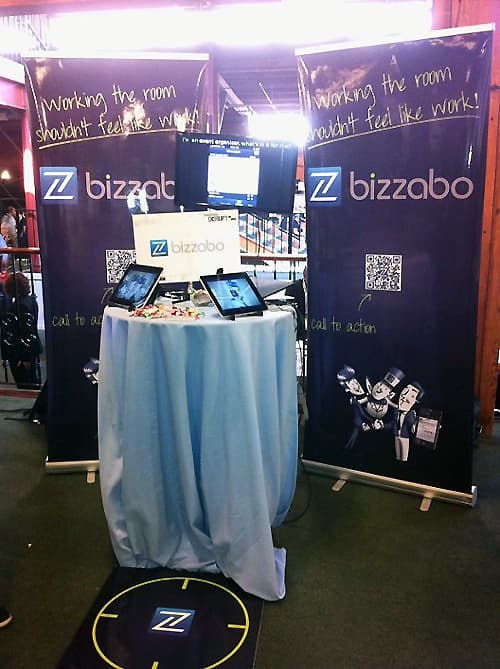
Photo credit: Bizzabo.com
Prepare handouts and promotional materials
Apart from an amazing booth display, you also have to think about handouts and promotional material. However, think of the product that would be both useful for the customers and be relevant to your brand. One of the most popular things to giveaway are pens and notebooks, USB sticks, mobile phone cases, stickers, folders, binders, your product samples, headphones, LED flashlights – and these are just a few ideas.
Again, you don’t have to blindly follow the others and copy the ideas for promotional materials – stick to your brand and come up with something that would represent you.
Don’t forget business cards, brochures, price sheets and flyers – you want to make sure potential leads have the details about your company and your phone number ready if they need to get in touch.
At the Event
Pitching to New Clients
It is always advisable to script and rehearse the pitch, prepare slides for demonstrations and make sure potential clients are not overwhelmed with too much information (it may scare them off so don’t be too pushy). I really liked a blog post by Hubert Palan, CEO of Productboard.com sharing his experience and DOs at the expos, there are many points you can take a note of. The main things that make a good pitch are:
- Good timing – make several versions of the pitch, 60 second and 5 minute pitches will be just enough.
- Prepare alternatives – while you are speaking to an attendee, you should think how to engage with others waiting in a line to learn more about your company. Have a big LCD screen showing a presentation or live demo, bring some iPads and give them to waiting attendees so they can watch a video about your product.
- Be confident – people can feel when you are an expert of the product, so show confidence in what you do, be prepared and prepare your team to answer any questions about the product and your company.
- Be simple and specific – clearly define what your product does. People don’t want to hear all specs, ins and outs of your new tech product (unless they ask more details about it). Make it simple – select the coolest feature of your product and sell it. This is what grabs people’s attention and makes your company memorable.
- Have more than one person in the booth who is comfortable pitching. When things get hectic, you don’t want an important investor trying to wait for your attention, they will just move on.
- Have a backup laptop or iPad already loaded up with your pitch. Expect the worst at all times and be ready in case it happens.
Showing instead of Telling
There’s nothing more valuable for people than face-to-face interaction and startup expos is a perfect opportunity to meet potential clients and investors to have live discussions.
Also, instead of just speaking about the product, let them test it out. Use touch screens, headphones, have samples ready – your aim here is to educate people about your product, show processes and get some testimonials.
Most companies now use gamification in their booths and creating mobile event apps. TechCrunch will have a lot of technology fans so having a display with game-elements and beautiful graphics will increase your chance to attract and engage with them.
Be Hospitable
I know that you want your display to be all about your new and high-tech product but don’t forget the simple “human” aspect and hospitality. There will be lots of attendees, so having a place to chill and relax will bring a nice touch to your booth. Think of snacks and drinks you can distribute like mints or water bottles with your logo on. Throw bean bags or a few chairs, install a few charging points and wi-fi hotspots so your clients or anybody in the room can come and use it. What’s more, it is your opportunity to catch their attention and use it as an icebreaker before engaging with a potential client before pitching your product.
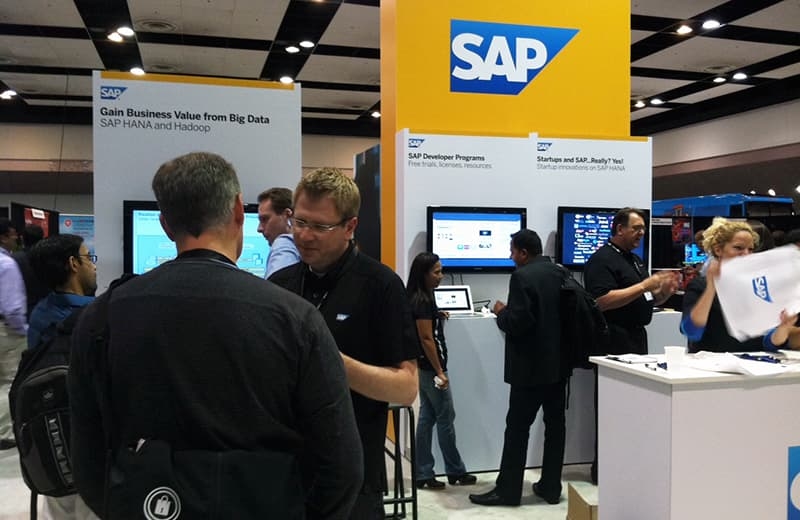
Check your Competitors
At the event, don’t be glued to your booth, walk around and see how your competitors are doing. You can learn a lot about how successful or unsuccessful they are with their presentations, what’s memorable about their booth, the overall layout of the display, the visuals they’ve prepared and what promotional tactics they use.
Don’t be hesitant to approach your competitors and have a friendly chat instead of trying to compete for the best product. Try to be open and see what comes out of it – you may collaborate on a project together and end up getting a peer in business?
After Parties: Enjoy yourself, just not too much!
You may think the hardest part is now done but actually, you are just getting started! At the end of the event, people usually get tired, thirsty and hungry. This is when executives, managers and investors are all gathering to a restaurant or a club to have a drink or two and discuss the highlights of the event. And, this is where the magic and real networking happens – you have a chance to make most valuable connections. Conferences are very proud of their after parties and these are my tips for making the most out of it:
1. Enjoy yourself – You have just had a crazy day giving around two hundred 30 second pitches to visitors of your booth. You have probably been working into the night for the past couple of months getting prepared and now is your chance to have fun. Reward your team, have a cocktail and appreciate the moment that you are in. I remember having to pinch myself thinking that I had gone from telesales in a cramped office to partying on a New York rooftop and I will never forget that moment.

2. Network – most probably, you are at TechCrunch to meet investors – so speak to people! The most important thing to remember is that investors are committing just as much to you as they are to your product and so this is your chance to introduce yourself and meet new people. There will be a lot of hype and excitement in these parties and it will intimidate you. So try and remember these things:
What is the worst that can happen? You feel awkward? You make a fool of yourself?
Who cares!!!
Try and speak to someone of importance and introduce yourself and let your passion for your product really come through and you will be pleasantly surprised with results.
After the Event
Follow up
A follow up is crucial to strengthen the connections you made at the show. Make sure to get in touch within 48 hours with all relevant connections to keep the momentum up and be smart with your emailing strategy. Investors are your focus point so email them straight after the event when the impression about your company is still fresh. Make sure to arrange a call – this is the best way to start building long lasting relationships.
Don’t ignore interested “warm” leads because these are the people who may potentially buy your product or service. Send them a “thank you” email, add a little info about your product to refresh their memory and try to arrange a call.
Another simple idea that works is adding a discount code or a special offer as a nice treat; or send a roundup blog post of your experience at TechCrunch with a photo of your company at the event – being real and honest will add a personal touch to your email and it will stand out from all traditional robotic and scripted pitch emails.
Social Media
After the event, I believe you are left with a pile of business cards and contact details of new customers. Make sure to use this information effectively – engage with all of them on social media channels – add them on Facebook, connect on LinkedIn and follow them on Twitter (don’t forget to message them and remind them who you are).
Secondly, share your experience, photos and outtakes from the event – basically, create a buzz on your social media. Write a blog post about the event and the lessons learnt and spread it across the web. You can search for relevant hashtags on Twitter and join conversations, share others’ tweets and post updates on Facebook and LinkedIn. Also, explore Quora for questions about TechCrunch, share your insights and personal experience – not only you add value as a helpful community member but also strengthen a positive brand image.
Evaluate your performance
Check how you performed against your goals. Depending on the goal that you’ve initially set up, you should answer the question: “How many potential clients did I get?”, “Did I get one interested investor?” etc.
Next, check the activity of your social media accounts after the show – is there a change in traffic? Did you increase your number of followers on Facebook and Twitter? Did you get any valuable connections on LinkedIn? How are users reacting to your event posts – did you get lots of retweets and reposts? All of this information will help you measure you success rating and give guidelines for your strategy for the next event.
Lastly, review your expenditures and see if you went above the estimated budget. It will give you an idea where you could save your expenses and what areas are worth investing in.
***
Startup conferences are essential for many startups to showcase their brand and attract attention and it is natural to make mistakes as long as you learn from them. My honest advice is to prepare your strategy in advance, consider several possible scenarios and have a very positive mindset, because really, what’s the worst that can happen? You are attending one of the best and innovative expos so relax, have fun and take the most out of it!
Business & Finance Articles on Business 2 Community
(71)
Report Post

